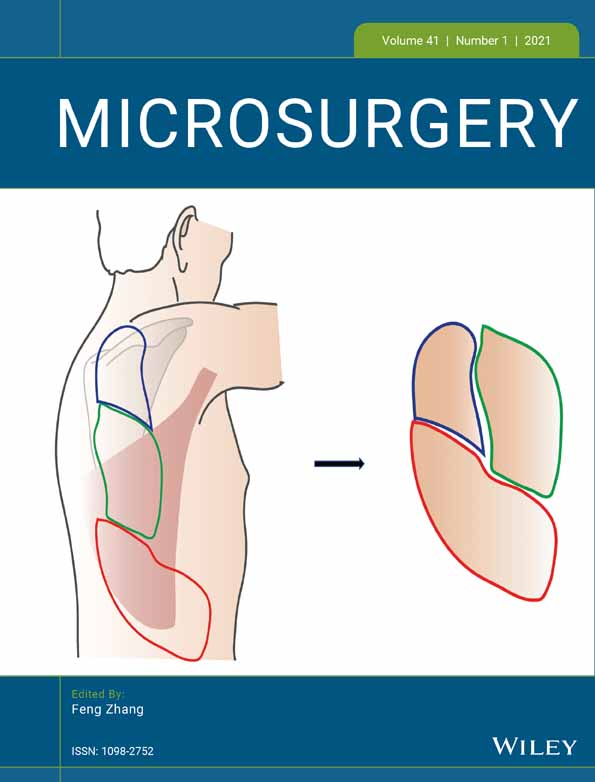Triple-lobe combined latissimus dorsi and scapular flap for reconstruction of a large defect after sarcoma resection
Abstract
Background
In the setting of the reconstruction for a large defect, we must make the maximum use of the limited human tissue with the minimum damage. In this article, we report on reconstruction using a combination of three-skin paddle latissimus dorsi and a scapular flap for a large defect after soft tissue sarcoma resection to minimize donor site morbidity.
Methods
From 2000 to 2012, six patients underwent primary reconstruction using free or pedicled triple-lobe combined latissimus dorsi and scapular flap after wide resection of soft tissue sarcoma. There were five male patient and one female, and their average age was 66.8 (range, 49–80 years). The location of the defects was the thoracic wall in three, the thigh in one, the knee in one, and the shoulder in one. The average size of the defect was 18.8 × 13.9 cm.
Results
The average size of the ascending scapular flap and the skin paddle of the latissimus dorsi flap was 6.8 × 13 cm and 7.3 × 14.7 cm. One patient had partial necrosis of the skin paddle of the latissimus dorsi flap, which was treated conservatively. The triple-lobe combined latissimus dorsi and scapular flaps survived completely in five cases. Neither anastomosis complications nor infections were encountered. The average follow-up period was 63.67 months. All patients were satisfied functionally and esthetically with the reconstruction outcomes at the end of follow-up.
Conclusion
In conclusion, the triple-lobe combined latissimus dorsi and scapular flap is one of the options for reconstruction of a large defect after sarcoma resection to minimize donor site morbidity.




